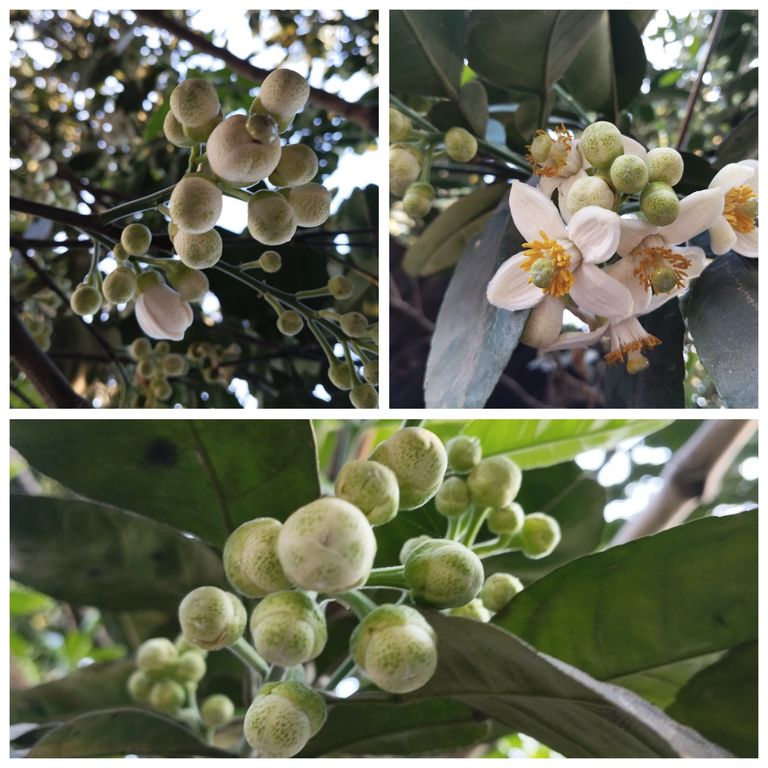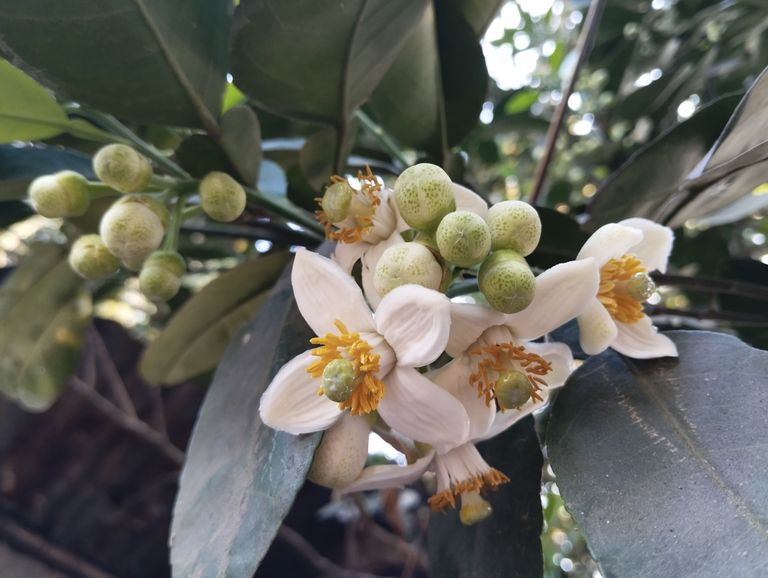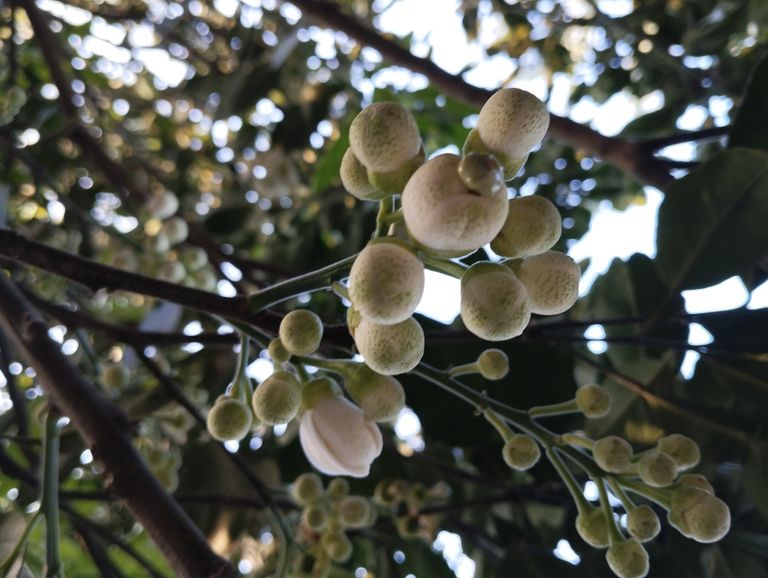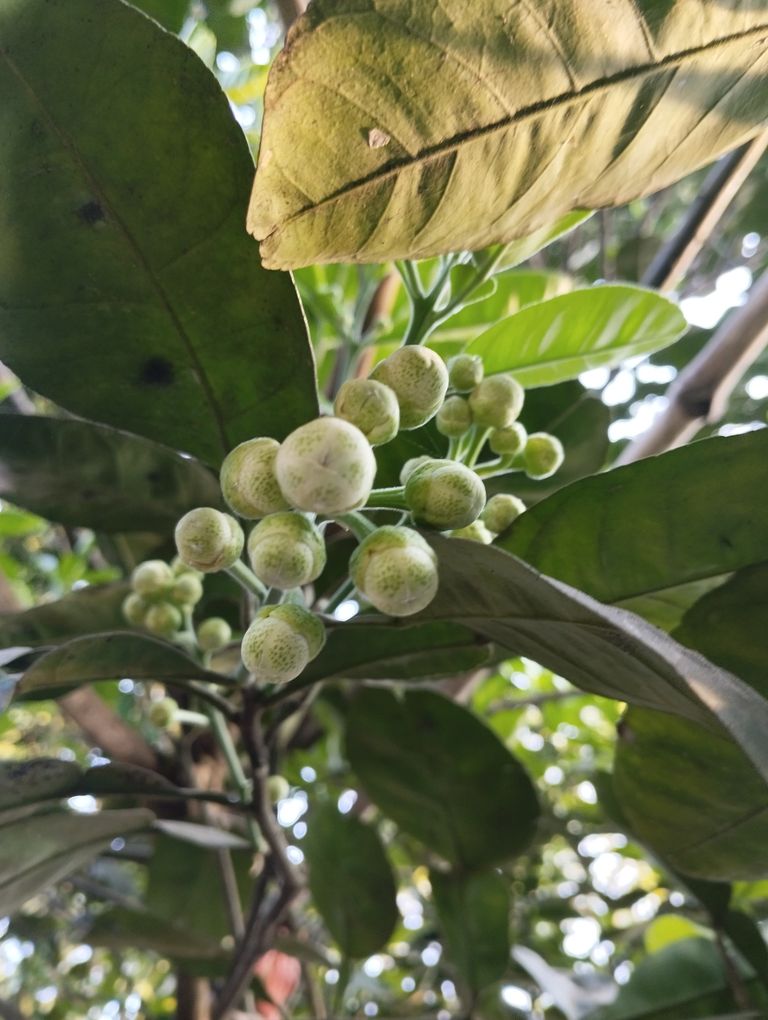
Reasons Why Pomelo Flowers Drop and How to Prevent It.
Pomelo (Citrus maxima) is a popular citrus fruit grown in tropical and subtropical regions. It produces fragrant white flowers, which eventually develop into large, juicy fruits. However, many growers face the issue of premature flower drop, leading to reduced fruit yield. In this article, we will explore the reasons behind pomelo flower drop and provide effective solutions to minimize the problem.
- Natural Shedding Process
Before assuming there is a problem, it is important to understand that some degree of flower drop is natural. Pomelo trees produce an abundance of flowers, but only a small percentage of them will turn into fruit. The tree naturally sheds excess flowers to balance its resources and ensure that it can support healthy fruit development.
Solution
Since this is a natural process, there is no need to worry unless excessive flower drop occurs. Proper care and management can help retain more flowers and increase fruit production.
- Lack of Pollination
Pollination plays a crucial role in fruit development. If pomelo flowers are not pollinated properly, they will wither and fall off. Lack of pollination can be due to:
Absence of pollinators like bees and butterflies
Poor weather conditions (strong winds, heavy rain, or extreme heat)
Lack of nearby pomelo trees for cross-pollination
Solution
Encourage pollinators by planting flowers that attract bees and butterflies.
Avoid using chemical pesticides that harm pollinators.
If necessary, perform hand pollination by transferring pollen from one flower to another using a soft brush.
- Nutrient Deficiency
A lack of essential nutrients, especially nitrogen (N), phosphorus (P), potassium (K), and calcium (Ca), can weaken the tree and cause flower drop. If the soil lacks these nutrients, the tree may not have enough energy to sustain flowers and fruit development.
Solution
Apply a balanced fertilizer (e.g., NPK 10-10-10) before the flowering stage.
Ensure the tree receives adequate calcium, as it plays a vital role in flower retention.
Use organic compost or manure to improve soil fertility.
- Water Stress (Too Much or Too Little Water)
Both overwatering and underwatering can lead to flower drop. When the tree does not receive sufficient water, it experiences stress, causing flowers to fall. On the other hand, excessive watering can lead to root rot, which affects nutrient uptake and weakens the tree.
Solution
Maintain a consistent watering schedule.
Water deeply but avoid waterlogging.
Mulch around the base of the tree to retain soil moisture.
- Extreme Temperature and Weather Conditions
Pomelo trees are sensitive to temperature fluctuations. Excessive heat, cold, or sudden weather changes can cause stress, leading to flower drop.
Solution
During extreme heat, provide shade using netting or cloth.
In cold weather, protect young trees by covering them with plastic sheets or straw.
Water the tree adequately during dry seasons to reduce heat stress.
- Pest and Disease Attacks
Various pests and diseases can weaken the tree, leading to flower drop. Common culprits include:
Aphids and thrips: Suck plant sap, weakening the flowers.
Citrus greening disease: Caused by bacteria spread by psyllid insects.
Fungal infections: Excess moisture can promote fungal growth, affecting flowers and fruit set.
Solution
Regularly inspect the tree for signs of pests or diseases.
Use organic pesticides like neem oil or insecticidal soap.
Ensure proper air circulation by pruning excess branches.
Remove infected flowers and leaves to prevent the spread of disease.
- Improper Pruning
Over-pruning or incorrect pruning techniques can weaken the tree and cause excessive flower drop. Removing too many branches at once reduces the tree’s ability to photosynthesize and produce enough energy for fruit development.
Solution
Prune the tree lightly and strategically to maintain its shape and health.
Avoid pruning during the flowering and fruit-setting stages.
Remove only dead, diseased, or overcrowded branches.
- Excessive Fruit Load
If a pomelo tree has too many developing fruits, it may shed flowers to conserve energy. The tree naturally limits its fruit production to ensure that the existing fruits develop properly.
Solution
Allow the tree to self-regulate, as this is a natural survival mechanism.
If necessary, thin out some young fruits to balance the load.
Final Thoughts
Pomelo flower drop can be frustrating, but understanding the underlying causes can help you take the right preventive measures. By ensuring proper pollination, balanced nutrition, adequate watering, and pest control, you can significantly reduce flower loss and improve fruit yield. Regular monitoring and good orchard management practices will help keep your pomelo tree healthy and productive.

Health Benefits of Pomelo (Jambura) – A Superfruit for Wellness
Pomelo, also known as Jambura in Bengali, is a citrus fruit packed with essential nutrients. It is the largest citrus fruit and is often mistaken for grapefruit due to its similar appearance. However, pomelo has a sweeter taste and offers a variety of health benefits. In this blog, we will explore the numerous advantages of eating pomelo and why you should include it in your diet.
Nutritional Value of Pomelo
Pomelo is rich in vitamins, minerals, and antioxidants. A 100-gram serving of pomelo contains:
Calories: 38
Carbohydrates: 9.6 g
Protein: 0.8 g
Fat: 0.04 g
Vitamin C: 61 mg (More than 100% of daily requirement)
Fiber: 1 g
Potassium: 216 mg
Now, let’s dive into the amazing health benefits of pomelo.
- Boosts Immunity
Pomelo is an excellent source of vitamin C, which strengthens the immune system. Regular consumption helps the body fight off infections, colds, and flu. The antioxidants in pomelo also protect the body from harmful free radicals, reducing the risk of chronic diseases.
- Promotes Heart Health
Pomelo contains high levels of potassium, which helps regulate blood pressure and maintain a healthy heart. It also reduces bad cholesterol (LDL) and increases good cholesterol (HDL), lowering the risk of heart diseases and strokes. The antioxidants in pomelo prevent the oxidation of cholesterol, reducing artery blockage.
- Aids in Digestion
The fiber in pomelo supports digestive health by promoting smooth bowel movements. It prevents constipation and helps in the proper absorption of nutrients. Eating pomelo regularly can improve gut health and prevent digestive disorders like bloating and irritable bowel syndrome (IBS).
- Supports Weight Loss
Pomelo is a low-calorie fruit that keeps you full for a long time. The high fiber content reduces hunger cravings, making it an excellent choice for those trying to lose weight. Additionally, pomelo boosts metabolism and helps burn fat more efficiently.
- Improves Skin Health
The vitamin C and antioxidants in pomelo contribute to glowing skin. They help in collagen production, which keeps the skin firm and youthful. Pomelo also fights signs of aging, such as wrinkles and fine lines, by reducing oxidative stress and promoting skin regeneration.
- Regulates Blood Sugar Levels
Pomelo has a low glycemic index, making it a great fruit for diabetics. It helps regulate blood sugar levels and improves insulin sensitivity. The fiber content in pomelo also slows down sugar absorption, preventing sudden spikes in blood glucose levels.
- Enhances Kidney Health
The high potassium content in pomelo helps maintain kidney function by balancing electrolytes and reducing the risk of kidney stones. It also acts as a natural diuretic, flushing out toxins and excess salt from the body.
- Strengthens Bones
Pomelo contains essential minerals like calcium and phosphorus, which promote strong bones and teeth. Regular consumption can help prevent osteoporosis and bone-related issues, especially in older adults.
- Improves Hydration
Pomelo has a high water content, keeping the body hydrated. This is especially beneficial during hot weather or after intense physical activities. Proper hydration is essential for maintaining energy levels and overall body function.
- Boosts Mood and Reduces Stress
Pomelo contains flavonoids that have anti-stress and anti-depressant properties. Eating pomelo can boost mood and reduce anxiety. The fruit also helps regulate cortisol levels, which are responsible for stress management.
How to Eat Pomelo
There are several ways to enjoy pomelo:
Fresh: Eat the fruit raw after peeling and removing the thick white membrane.
Salads: Add pomelo slices to fruit or vegetable salads for a tangy-sweet flavor.
Juices: Blend pomelo with water and a little honey for a refreshing drink.
Desserts: Use pomelo in yogurt, smoothies, or fruit bowls.
Cooking: Pomelo can be used in Thai and Vietnamese dishes for added zest.
Precautions and Side Effects
Although pomelo is highly beneficial, excessive consumption may cause:
Stomach discomfort: Eating too much pomelo can lead to acidity or bloating.
Interaction with medications: Pomelo can interfere with certain medications, especially those for blood pressure and cholesterol. If you are on medication, consult your doctor before consuming pomelo.
Allergic reactions: Some people may experience allergies to citrus fruits, so it’s best to test a small amount first.
Final Thoughts
Pomelo is a delicious and nutritious fruit that offers a wide range of health benefits. From boosting immunity and improving heart health to promoting digestion and glowing skin, this citrus fruit is a must-have in your diet. Whether you eat it fresh or add it to your favorite dishes, pomelo is a natural way to enhance your overall well-being.
So, next time you see a pomelo at the market, don’t hesitate to grab one and enjoy its refreshing taste and health benefits. Would you like more detailed information on any of these benefits? Let me know.

Pomelo Farming: A Complete Guide to Cultivation and Care
Pomelo (Citrus maxima) is a large citrus fruit known for its sweet and tangy flavor. It is widely cultivated in tropical and subtropical regions, especially in South and Southeast Asia. Pomelo farming can be a profitable venture if managed properly. This guide will take you through everything you need to know about growing pomelo, from selecting the right variety to harvesting and marketing.
- Introduction to Pomelo Farming
Pomelo is the largest citrus fruit, often weighing between 1–3 kg. It has a thick rind and is rich in vitamins, antioxidants, and fiber. Pomelo trees are hardy, drought-resistant, and can thrive in different soil conditions, making them an excellent choice for commercial farming.
Benefits of Growing Pomelo:
High market demand for fresh fruit and processed products.
Requires minimal maintenance once established.
Adaptable to various climates and soil types.
High yield per tree, making it profitable.
- Best Climate and Soil for Pomelo Farming
Climate Requirements
Pomelo grows well in tropical and subtropical climates with temperatures between 25°C to 35°C (77°F to 95°F). It requires moderate rainfall (1000-1500 mm annually) but cannot tolerate waterlogged conditions.
Soil Requirements
Well-drained sandy loam or loamy soil with good fertility.
Ideal pH level: 5.5 – 7.5.
The land should be rich in organic matter and free from hardpan layers.
- Propagation and Planting Methods
Pomelo can be propagated through seeds, grafting, or budding. However, grafting and budding are preferred for commercial farming as they ensure better fruit quality and early maturity.
Steps for Planting Pomelo:
- Land Preparation:
Clear the field of weeds and debris.
Plow and level the land properly.
Apply organic compost to improve soil fertility.
- Spacing and Planting:
Maintain a spacing of 6–8 meters between trees.
Dig planting pits of 60 cm x 60 cm x 60 cm and fill them with a mixture of soil and organic manure.
Water the seedlings immediately after planting.
- Best Planting Time:
Rainy season (June to August) is ideal for planting pomelo trees.
- Fertilization and Irrigation
Fertilizer Requirements
A balanced fertilizer schedule is essential for healthy growth and high yields.
Use organic compost or farmyard manure to improve soil health.
Micronutrients like zinc, magnesium, and boron help improve fruit quality.
Irrigation Management
Young Trees: Water twice a week during dry seasons.
Mature Trees: Water once every 10–15 days.
Flowering & Fruiting Stage: Adequate moisture is crucial to prevent fruit drop.
- Pruning and Canopy Management
Remove diseased, weak, or overcrowded branches to improve air circulation.
Train the tree to a strong central trunk for better stability.
Pruning helps in increasing fruit size and yield.
- Pest and Disease Management
Common Pests:
Aphids & Scale Insects: Use neem oil or insecticidal soap.
Citrus Psyllid: Apply organic pesticides like neem-based solutions.
Fruit Flies: Use pheromone traps to reduce infestation.
Common Diseases:
Citrus Canker: Control with copper-based fungicides.
Root Rot: Ensure proper drainage and avoid overwatering.
Greening Disease (HLB): Use disease-free planting material.
- Flowering, Pollination, and Fruit Set
Pomelo trees start flowering 2–3 years after planting.
Natural pollination occurs through bees and insects.
Hand-pollination can improve fruit set in commercial orchards.
- Harvesting and Post-Harvest Management
When to Harvest?
Pomelo fruits take 6–8 months to mature after flowering.
Fully mature fruits turn yellowish-green with a firm texture.
Harvesting Method:
Use sharp pruning shears to cut the fruit with a small stem attached.
Handle fruits carefully to prevent bruising.
Post-Harvest Handling:
Sorting & Grading: Classify fruits based on size and quality.
Storage: Store at 10–15°C to extend shelf life.
Packaging: Use ventilated crates to prevent damage during transport.
- Marketing and Profitability
Pomelo has a strong demand in local and international markets. It is sold as fresh fruit or processed into juices, jams, and candies.
Marketing Strategies:
Sell directly to wholesalers, supermarkets, and fruit markets.
Promote through social media and e-commerce platforms.
Export high-quality fruits to international markets.
Expected Yield & Profitability:
A healthy pomelo tree produces 50–100 fruits per year.
Farmers can earn a good profit if proper care and marketing strategies are followed.
- Conclusion
Pomelo farming is a profitable and sustainable agribusiness when managed correctly. By choosing the right variety, maintaining soil health, ensuring proper irrigation, and adopting effective pest control measures, farmers can achieve high yields and quality produce. With increasing demand for healthy and organic fruits, pomelo farming presents an excellent opportunity for growers worldwide.
